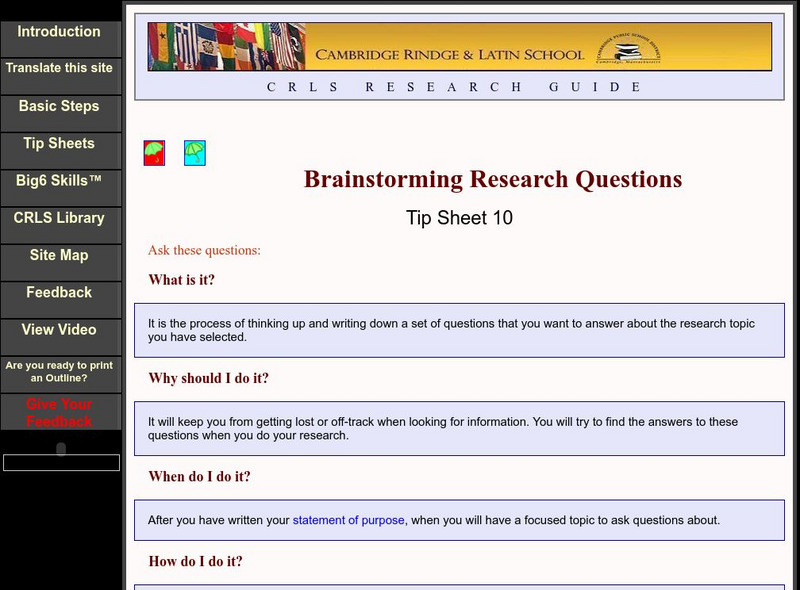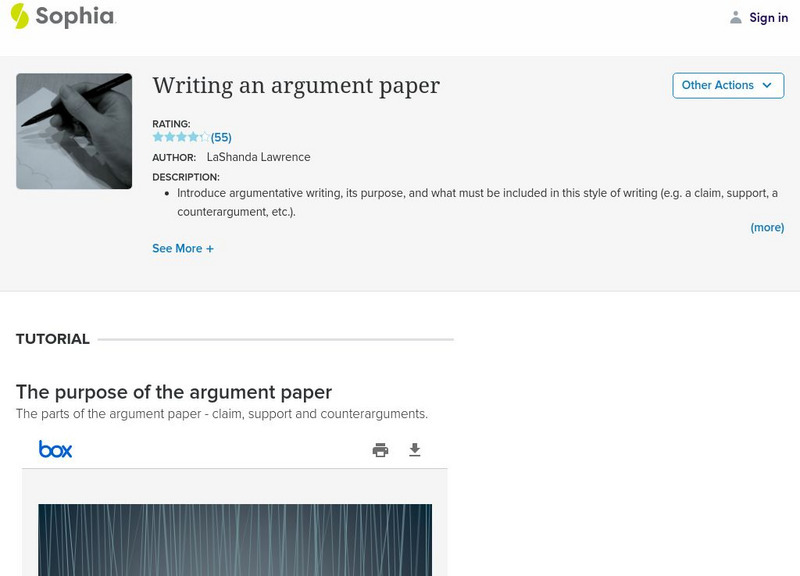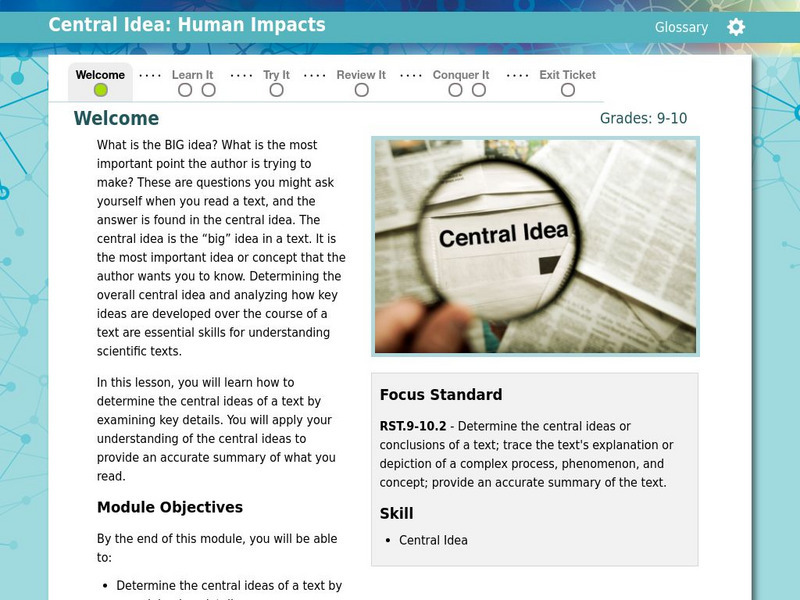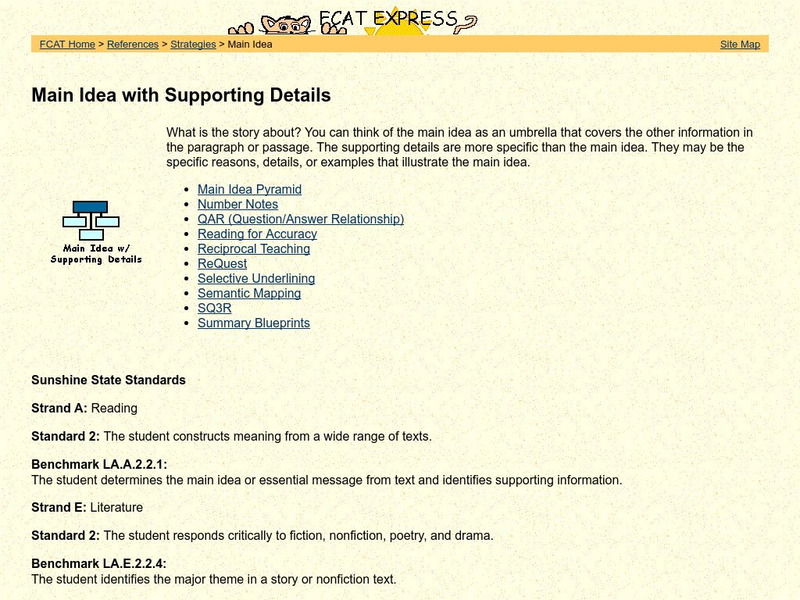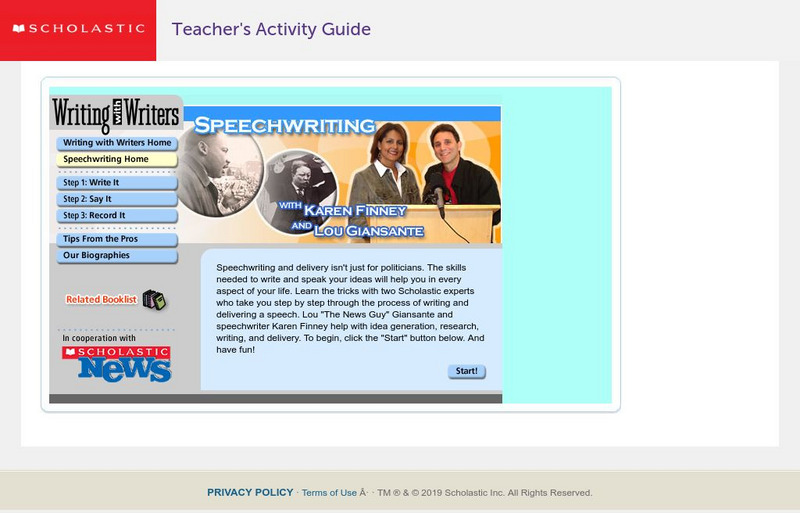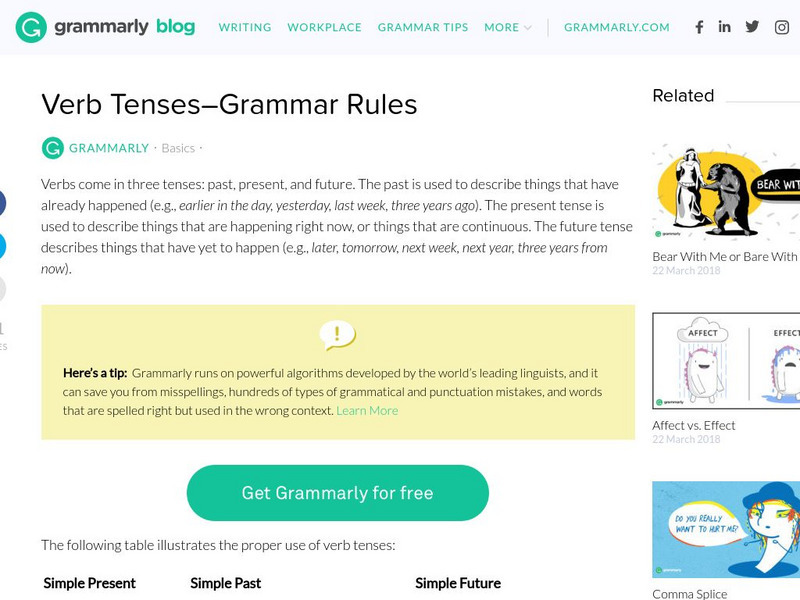Other
Carson Newman College: Close Reading of a Literary Passage [Pdf]
Provides a number of questions that students can ask themselves about a literary passage when doing a "Close Reading" and following this with an organized piece of writing. CCSS.ELA-Literacy.CCRA.R.5
Cambridge Rindge & Latin School
Cambridge Rindge & Latin School: Brainstorming Research Questions
An excellent tip sheet for using brainstorming techniques for writing research papers. It also gives great examples of factual and interpretive questions. It also provides links to very helpful tip sheets with examples and a worksheet...
Pennsylvania State University
Pennsylvania State University (Dr. Mc Clennen): How to Do a Close Reading
This guide is written for college students, but should be very useful for upper level high school students as well. The writer first describes fourteen steps to take in doing a close reading, then provides six pieces of advice on how to...
Sophia Learning
Sophia: Evaluating the Connotation
This lesson focuses on evaluating the connotation of a vocabulary word. It defines connotation and gives an example. It details three steps: read the word in context, determine the tone of the overall reading, and compare the tone with...
E Reading Worksheets
E Reading Worksheets: Text Structure Activities
Numerous links related to analyzing text structures are provided on this site. Lesson plans, PowerPoint slides, graphic organizers, rubrics, and quizzes related to text structures are also provided to support students while analyzing...
Other
Six Minutes: Speech Analysis #1: How to Study and Critique a Speech
Dlugen presents a detailed collection of tips to observe when critiquing others' speeches. This skill is critical in improving individual presentation abilities. SL.9-10.3 Eval Presentation. CCSS.ELA-Literacy.CCRA.SL.3, SL.9-10.3 Eval...
Sophia Learning
Sophia: Determining Your Audience
On this website you will find information, two presentations, and a practice worksheet explaining how to decide the audience of a written piece and how to appeal to an intended or general audience in an original text....
Sophia Learning
Sophia: Writing an Argument Paper
In this slideshow tutorial, students will review how to write an argument paper. Students will review the parts of the argument paper, which include the thesis, claim, support, and counterarguments. CCSS.ELA-Literacy.CCRA.W.1, W.11-12.1a...
Curated OER
Mc Graw Hill: Part 2 Reading: Informational Text: How Reasons Support Key Points
Get an example of how to identify an author's main idea in a text on this site. Also, learn how to recognize supporting ideas to main ideas presented in a text. CCSS.ELA-Literacy.CCRA.R.2
Curated OER
Mc Graw Hill: Compare Points of View Narrator
Read a passage from a story to determine who is the narrator and what is the narrator's point of view. An additional practice exercise is available. CCSS.ELA-Literacy.CCRA.R.6
Annenberg Foundation
Annenberg Learner: Literature: Analyzing Theme
Article explains how to find the theme in a piece of literature by asking yourself a series of questions as you read. RL.9-10.1 Analyzing Theme. CCSS.ELA-Literacy.CCRA.R.2
Better Lesson
Better Lesson: rl.k.9
Written by Master Teachers, BetterLesson provides lesson plans for all core subjects. This site provides 15 lessons for RL.K.9: With prompting and support, compare and contrast the adventures and experiences of characters in familiar...
TES Global
Blendspace: rl.k.5 Recognize Common Types of Texts (e.g., Storybooks, Poems).
In this module, students will read two texts on the topic of pancakes and distinguish between the text that is a storybook and the text that is a poem.
English Plus+
Grammar Slammer Glossary: Prepositions
This site offers a basic definition of prepositions, along with a chart of the most common ones. Some of the prepositions listed serve as a hypertext link to more detailed information on that specific word.
Better Lesson
Better Lesson: Awe Inspiring, Extraordinary, Erudite Kids
Using complex language, including rich descriptors, is necessary for mastery of the CCSS Standards. This lesson is a great lesson in using adjectives to enrich speaking and writing. Included are a video demonstration and printable...
Other
Oslis: Learn How to Do Research, Find Information, Cite Sources
Excellent site outlining each step for Internet research at the middle school and secondary levels. This site focuses on a variety of information literacy topics, from how to research, find and evaluate information, and cite sources....
Thinkport Education
Thinkport: Determine the Central Idea: Human Impacts
Students will learn how to identify the central idea of a text about human impacts by examining key details.
Other
Oslis: Research Process
Excellent site outlining each step for Internet research for grades 6-12. This site focuses on writing a research paper from selecting a topic through to the final paper. Click on Cite My Sources to get the electronic citation machines....
University of Houston
University of Houston: Extra! Extra! What's the Big Idea?!
Get the feel of running a newspaper by selecting articles and pictures. If you are interested in checking out real newspapers, there is a clickable list of online newspapers for younger readers.
Polk Brothers Foundation Center for Urban Education at DePaul University
De Paul University: Center for Urban Education: Compare Central Idea Across Mult Texts [Pdf]
This Center for Urban Education resource provides a downloadable graphic organizer designed for comparing a central idea across multiple texts.
Polk Brothers Foundation Center for Urban Education at DePaul University
De Paul University: Center for Urban Education: Nonfict Readers Analyze Structure/views[pdf]
This graphic organizer contains questions for students as they analyze any nonfiction text. Students will read closely to determine the text's structure, viewpoint, and tone. This graphic organizer is a copyrighted material that may be...
University of South Florida
Fcat Express: Main Idea With Supporting Details
Strategies to help students recognize main ideas and supporting details provided by a standardized test preparation site intended for fourth grade. Includes strategies such as Main Idea Pyramids, Number Notes, QAR (Question/Answer...
Scholastic
Scholastic: Writing With Writers: Speech Writing
Learn steps from the experts on how to write and deliver a great speech. There are tips and graphic organizers for writing. The final step is recording your speech on the Radio Hotline. Listen to other student writing as well.
Grammarly
Grammarly Blog: Verb Tenses: Grammar Rules
This page explains the three major verb tenses: past, present, and future with examples. It also offers links to information about each of these as well as the perfect, continuous, and perfect continuous of each.
![Carson Newman College: Close Reading of a Literary Passage [Pdf] Unit Plan Carson Newman College: Close Reading of a Literary Passage [Pdf] Unit Plan](https://d15y2dacu3jp90.cloudfront.net/images/attachment_defaults/resource/large/FPO-knovation.png)
